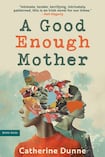
The women in this novel have been ripped apart. It’s 1960, and Eileen has taken the boat to England where she is forced to give her infant son up for adoption. It’s 1979 and Maeve has been taken from her complicit family, left alone in a brutal home for mothers and babies. Then there’s Tess, a modern day mother who must face the possibility that her wayward son has committed the most horrific crime: “I think that this time, Luke might have done something really bad.”
How unconditional is a mother’s love? This is a question for Tess and Luke but is also a pattern through all the intergenerational relationships here, including Tess’s mother, Betty, whose voice has a lightness that comes with wisdom. “There goes my life,” says another relatively young woman about becoming a grandmother – a role Dunne plays tribute to in the novel.
The author has known Ireland since the 1950s and it shows. Women spring alive in their time and place, many carrying an ambivalence to motherhood: do I want this, must I do this, am I able? Then there is the secrecy and separation of shame, but also a solidarity this “secret army of women” find in each other.
We fall into the gripping eloquence of Dunne’s accomplished storytelling, as the uncertainty about Luke mounts, and the threads of these different narratives pull together. But don’t let the warmth and suspense of Dunne’s novel fool you: this is a wolf in sheep’s clothing.
Dunne said writing the book was like making a patchwork quilt; each woman has their square. The novel adds to the stitches of Keegan, Ní Churreáin, Traynor and others about the cruelty and injustice of the mother and baby institutions, and the systems which enabled them: running through is a steel thread of considered fury at what was done to young women in our recent past, what happens today to their daughters and granddaughters.
“Does it ever end?” asks one character, as yet another man hurts yet another woman. But this isn’t an issue-led book: it’s women-driven. In counterpoint to suffering and survival is the bright, bold story of the bonds of friendship between these women, of a passing on of kindness, and of memory.














